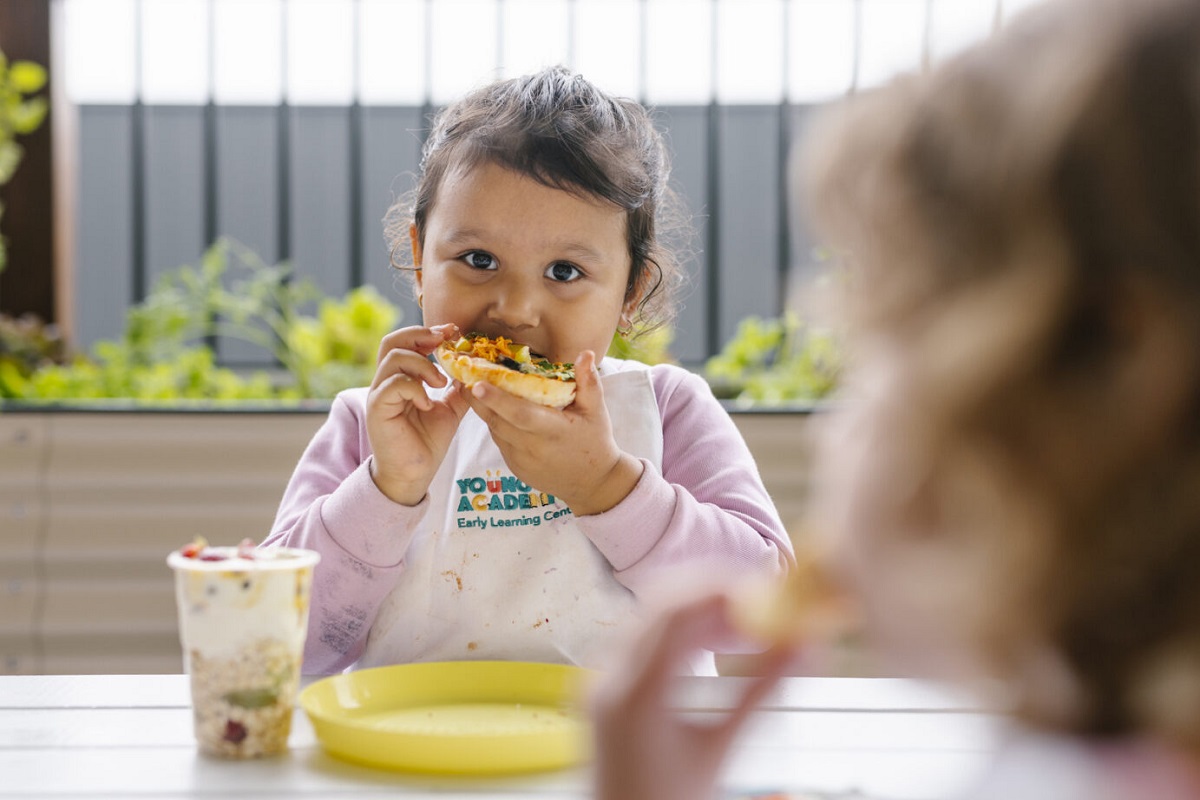In a childcare setting, the introduction of new foods can be a delightful journey filled with opportunities for discovery and development. Encouraging a diverse and nutritious diet from an early age sets the stage for a lifetime of healthy eating habits. Below, our Young Academics Centre Cooks provide practical tips and strategies for making the process of introducing new foods a positive and enjoyable experience for young children in a childcare setting.
Creating a Nurturing Environment
Establishing a positive and supportive atmosphere is crucial when introducing new foods. Create a welcoming dining area with colourful decorations and child-friendly tableware. Foster a sense of community by encouraging children to share their thoughts and experiences during mealtimes. Ensure that mealtimes are stress-free, allowing children to explore and enjoy their food without pressure.
Variety is Key
Offer a diverse range of foods to expose children to different tastes, textures, and nutritional benefits. Incorporate a colourful array of fruits, vegetables, whole grains, and proteins into your menu. Rotate options regularly to keep meals exciting and prevent monotony.
Age-Appropriate Presentation
Consider the age and developmental stage of the children in care when presenting new foods. For younger children, purees and finger foods may be appropriate, while older children can explore a wider variety of textures. Pay attention to choking hazards and cut foods into age-appropriate sizes.
Hands-On Exploration
Embrace the concept of family-style dining, where children serve themselves with guidance from educators. This approach not only promotes independence but also allows them to explore and choose foods they might not have considered before. Encourage hands-on exploration by incorporating interactive activities into mealtime. For example, create a “build-your-own” taco station or let children dip veggies into a tasty yogurt-based dip. Interactive experiences make mealtimes more engaging and can stimulate curiosity about new foods.
Engage in Food Activities
Make learning about food a hands-on experience by incorporating fun and educational activities. Planting a small vegetable garden, organising simple cooking classes, or arranging themed food tastings can make the introduction of new foods an interactive and enjoyable process.
Embrace Cultural Diversity
Celebrate diversity by introducing children to foods from different cultures. Explore the world through taste by incorporating international dishes into your menu. Use mealtime as an opportunity to teach children about different customs, traditions, and the importance of respecting diverse culinary practices.
Gradual Exposure
Introduce new foods gradually to allow children to acclimate to different tastes and textures. Start with small portions alongside familiar favourites. As children become more comfortable, gradually increase the variety of foods offered.
Communication with Parents
Maintain open communication with parents about the introduction of new foods. Share menu plans, discuss any food allergies or dietary restrictions, and collaborate with parents to create a cohesive approach to nutrition both at home and in the childcare setting.
In childcare, introducing new foods is an opportunity to create positive associations with nutrition and exploration. By fostering a supportive environment, engaging in interactive activities, and promoting a diverse and balanced menu, educators and childcare providers can play a pivotal role in laying the foundation for healthy eating habits that will benefit children throughout their lives.







